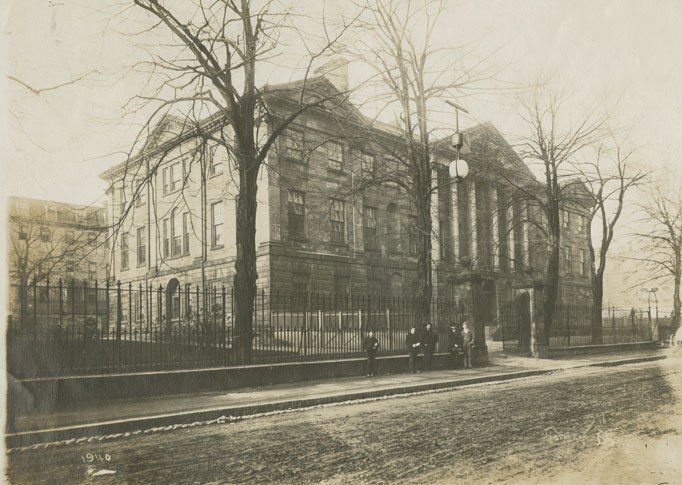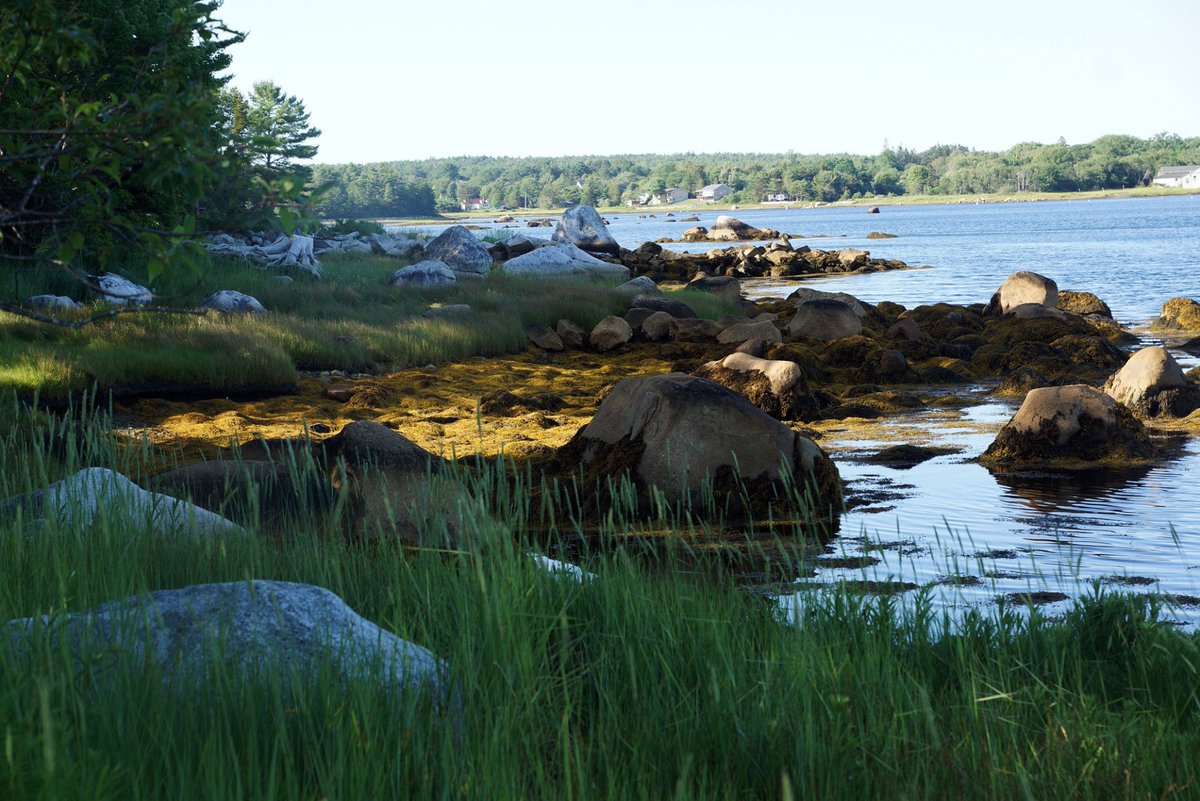Mining built #NovaScotia!
The term building stone refers, not surprisingly, to stone used in construction. It can be structural/load-bearing or for decorative purposes such as cladding, floor pavers and carvings.
Read this for the history of building stone in #NS!
#nspoli #cbpoli

The term building stone refers, not surprisingly, to stone used in construction. It can be structural/load-bearing or for decorative purposes such as cladding, floor pavers and carvings.
Read this for the history of building stone in #NS!
#nspoli #cbpoli


Virtually any type of stone can be building stone but in Nova Scotia, sandstone and granite have historically been most common.
Most building stone in the 1600s and 1700s was either:
#nspoli #cbpoli #novascotia #capebreton

Most building stone in the 1600s and 1700s was either:
#nspoli #cbpoli #novascotia #capebreton


Ship ballast - rock or other heavy material placed low in a ship to improve its stability. Ballast in the days of sailing ships gave easy access to building material.
#nspoli #cbpoli #novascotia #capebreton

#nspoli #cbpoli #novascotia #capebreton


Fieldstones, which are usually erratics - rocks carried by glaciers and deposited as the glaciers melt. Fieldstones were historically often used in walls and buildings because they could just be picked up and used. No extraction necessary.
#nspoli #cbpoli #novascotia #capebreton

#nspoli #cbpoli #novascotia #capebreton


Quarrying sandstone began in the early 1800s around Wallace and #Pictou. Some of #NS's most beautiful buildings are made of stone from those quarries, including the legislature which opened in 1819 and is mainly made of Wallace sandstone.
#nspoli @karla_macf_pc @TimHoustonNS

#nspoli @karla_macf_pc @TimHoustonNS


Wallace sandstone is 300 million years old and 100,000 blocks were used in the legislature. Its exterior walls are up to 3 metres thick.
In 1985 @NSLeg was renovated and 1700 stones were replaced with stones from Wallace so they would match.
#nspoli @TimHoustonNS @karla_macf_pc
In 1985 @NSLeg was renovated and 1700 stones were replaced with stones from Wallace so they would match.
#nspoli @TimHoustonNS @karla_macf_pc

In the mid to late 1800s, as many as 75 quarries produced sandstone in Nova Scotia. Many were small and short-lived but #Wallace is still producing today and its stone has been used in many #NovaScotia buildings and even the parliament buildings in Ottawa.
#nspoli #cbpoli
#nspoli #cbpoli

Some Wallace stone even travelled as far as California!
Granite has also helped build many Nova Scotia buildings.
#nspoli #cbpoli #novascotia #capebreton
Granite has also helped build many Nova Scotia buildings.
#nspoli #cbpoli #novascotia #capebreton

Starting in the mid-1700s the old Queens Quarry on the Northwest Arm and quarries in Terence Bay (#Halifax County) provided granite for buildings in Halifax like Saint Mary’s Basilica and the Merrill Lynch Building.
#nspoli #cbpoli #novascotia #capebreton

#nspoli #cbpoli #novascotia #capebreton


Historical quarries in #Shelburne, #Nictaux (#AnnapolisCounty) and West Erinville (#Guysborough) also produced granite for construction. Many former quarries are now beautiful parks and protected areas.
#nspoli #cbpoli #novascotia #capebreton

#nspoli #cbpoli #novascotia #capebreton


We post info about many historical Nova Scotia buildings and where their stone was quarried. You can also see examples on our educational web site at notyourgrandfathersmining.ca/mining-built-ns
#nspoli #cbpoli #novascotia #capebreton
#nspoli #cbpoli #novascotia #capebreton

• • •
Missing some Tweet in this thread? You can try to
force a refresh



























